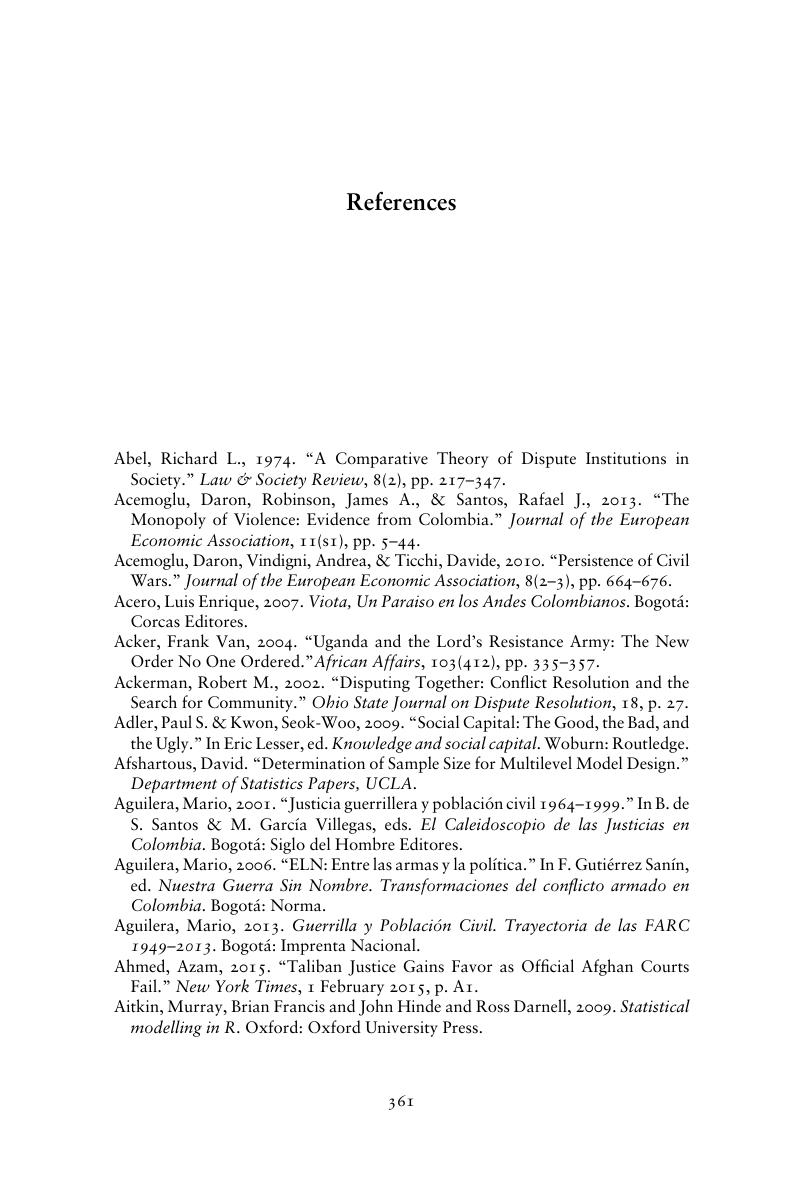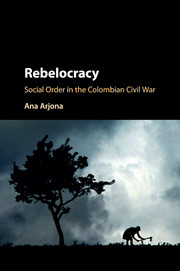Book contents
- Rebelocracy
- Cambridge Studies in Comparative Politics
- Rebelocracy
- Copyright page
- Dedication
- Contents
- Figures and Tables
- Acknowledgments
- Abbreviations and Glossary of Terms
- 1 Introduction
- 2 Wartime Social Order
- 3 A Theory of Social Order in Civil War
- 4 Research Design
- 5 The Determinants of Social Order
- 6 Creating Rebelocracy, Aliocracy, and Disorder
- 7 How Local Institutions Matter
- 8 Testing the Microfoundations
- 9 Conclusion
- Appendices
- References
- Index
- Other Books in the Series (continued from pageiii)
- References
References
Published online by Cambridge University Press: 20 January 2017
- Rebelocracy
- Cambridge Studies in Comparative Politics
- Rebelocracy
- Copyright page
- Dedication
- Contents
- Figures and Tables
- Acknowledgments
- Abbreviations and Glossary of Terms
- 1 Introduction
- 2 Wartime Social Order
- 3 A Theory of Social Order in Civil War
- 4 Research Design
- 5 The Determinants of Social Order
- 6 Creating Rebelocracy, Aliocracy, and Disorder
- 7 How Local Institutions Matter
- 8 Testing the Microfoundations
- 9 Conclusion
- Appendices
- References
- Index
- Other Books in the Series (continued from pageiii)
- References
Summary

- Type
- Chapter
- Information
- RebelocracySocial Order in the Colombian Civil War, pp. 361 - 386Publisher: Cambridge University PressPrint publication year: 2016



